On this episode, I speak with Matt Diggity from:
As you will hear, Matt is a boss-level SEO and website flipper.
In this part 1, free subscribers get the first 30 minutes; paying subscribers also get part 2 in their RSS feed. To access just hit the button below.
EPISODE SPONSOR
This podcast is sponsored by Ezoic, an AI-driven platform built for publishers to optimize ad revenue and maximise site speed.
Part 1 Show Notes
Matt does his website flipping within Leadspring LLC - a US-based company which hires the best from all around the world. They focus on hardcore affiliate, but have started to dip into lead generation. Actually the foundation of the company, with Kurt Philip from Convertica, was to focus on lead gen sites but they soon pivoted into affiliate SEO. They created a program called Leadspring Launchpad where they would JV with people who had got their site to a certain point and then would take over and split additional profit 50-50 (a similar model to what I used to do with Flipping Websites, now at Alpha Investors. The Launchpad is pretty much closed down now other than for exceptional opportunities.
Matt’s SEO Site Flipping Formula
Matt does have a formula that they are getting solid results from, but states it changes every day.
With all the new projects that they start they are going with acquisition - acquiring existing websites already ranking / pulling in traffic and making some revenue.
Step 1 - Super Audit
The first thing Matt does when acquires a new site is a super audit - a very thorough technical SEO overview, content optimization and conversation rate optimization. It’s not about backlinks at this point (although will do a backlink audit and disavow). The super audit tells them how ready the website is to work on it. After running the audit, they let websites sit for a month or so to see what happens.
If a website skyrockets (i.e. increased revenue from $1K/m to $4K/m) they will give it full attention right away, but if it’s a marginal improvement then most likely the site has some kind of filter / google algorithm penalty and they need to wait until the next google update to verify that they have done the right things, and that they will get a return on their efforts.
Step 2 - Content & Links
When a site takes off they start pouring on the typical process of content and links and continuously keeping an eye on things so that everything is technically sound along the way.
Step 3 - List Building & Youtube
Something changes around the $10K/m mark where the website becomes a bit more of a business so they invest more to protect it.
They do a couple of things at that point such as capturing leads through lead magnets, creating an automated email follow up series. They try to create a big list so can have traffic on demand, and get an audience into their own hands. They have also been playing around with Youtube channels, getting influencers to represent their sites to show Expertise, Authority & Trust to protect against future Google updates.
Step 4 - Experts & Backlinks
When the sites hit $20K/m, they continue with the influencers and try to get experts as staff in terms of content review and then:
At this point we go absolutely bonkers with backlinks.
Step 5 - Flip
When they feel like they have maxed out the niche they will look to flip.
Deal Size & ROI
Matt needs any acquisition to be making at least $100/m, which proves that a website has broken through a threshold where it will work.
Smaller sites in the $100/m to $1K/m range will generate a greater ROI from the same level of investment. At the lower end, marketplaces such as Empire Flippers won’t sell them so it’s more about negotiating with the seller and making them feel better about parting with their hard work.
I think it’s fun to take something from level 3 to level 60, if we are using a role playing game strategy, rather than level 40 to level 60.
Matt doesn’t track ROI on money invested into sites as the prices of backlinks vary between years:
We just try to go as fast as we can at all times and we know it’s always going to work out in the end as this is affiliate SEO, there are no better margins on the planet as far as I’m concerned.
His MO is to buy sites between $5K - $20K but has paid over $100K before.
Acquisition Filters
What he’s looking for are:
Backlinks - a mostly whitehat backlink profile. The quantity of links doesn’t influence the decision; having very hard to get links does.
Rankings - some decent keywords on page 1 (Google isn’t going to put websites on p1 that they hate)
Traffic graph - making sure it doesn’t have any recent penalties or devaluations
A niche he wants to be in (more below)
Branded domain name where you can really expand and potentially become a household name
Matt doesn’t consider the amount of content that comes with a website, especially if the content isn’t created to your own standard as it becomes more investment to fix up. At this deal size, he doesn’t want to buy a site where the traffic is super dependent on just one URL, but spread across 5 pages would be enough for him.
And just because the content you’re buying may be good, it’s not likely to be 6 months to a year from now, as search intent and algorithms change - on his own websites he’s auditing the content all the time.
Health, Wealth & Relationships
Matt states that he is very picky about the niche and tries to stay within these major three categories.
Health (spent the most time in): diet, weight loss, fitness, muscle building etc.
For wealth: crypto, real estate etc.
He has not touched relationships yet.
He states that he did break his rule about 9 months ago where he acquired a general Amazon review site in the home niche such as gearhungry.com (which he states sold for 8 figures). But the recent Amazon commission structure changed that idea.
Operational Capacity
Matt likes to keep Leadspring boutique level, managing anywhere between 6-10 authority sites at a single time, as any single website can get to 20-30x of your normal-sized website. They also like to keep headcount at a boutique level, having 2-3 main project operators, as find that staying agile and small is better suited for an industry that is completely changing all the time and you need to make fast decisions.
Matt only brings on a new website after they have flipped an old one.
Sourcing Deals
Matt sources deals from Facebook groups such as Flipping Websites but if he is going after a particular niche he will do outreach to existing sites that are ranked on p2 or p3 and making them a proposal. He finds the response rate from affiliate site owners is very low, however.
Doing Magic
When you’re investing in a website, one of two things can happen:
You see ranking increases right away. This means you had some technical SEO issues, content that needed optimization, or backlinks that needed to be built (when the site had low authority) that the algorithm didn’t need to refresh in order to reward you with. When this happens the website is ready for them to work on as has validated itself.
The website just doesn’t move that much, indicating that somewhere in a past algo update, Google devalued the site for a certain reason and you’re going to have to wait until the next algo refresh to see if the hard work you’ve been doing will pay off. Until then, the site is not ready for further investment.
When to Exit

Matt takes the sites as far as they can go, and looks to sell when they have maxed out the keywords to target. He has a site in the general health and wellness niche where the sky is the limit so has invested heavily into it. If they were to niche down into sub-topics of fitness, they would have less to talk about and you’d cap out earlier.
In general, Matt invests 60% into links and 40% into content. When a site really starts to take off they are publishing a new post a day which could be 1K to 2K words dependent on what the search is asking for, and typically paying about 6c a word. Therefore, likely spending $2K-$3K a month on content for a typical site and backlinks could scale up to $4K/m in a site’s growing phase. Then when you come out of the growth phase, you can scale back the investment in backlinks, as a lot of links will start to naturally come in. At that point, 80% of further investment would be content.
Matt would typically be looking to flip a site within 2 years, as long as the average last 6 months is at the highest level. Max ROI growth is in year 1; ROI actualization in year 2. In which case if you can max out content in year 1 you could flip quicker as content is now considered an asset and not an expense with brokerages.
Episode 6 Part 2
In part 2 of this conversation:
How to win from Google updates
Why Matt does not like to use 301 redirects
How Matt is leveraging influencers on Youtube and Instagram
How we both see the future of website investing as individual assets (e.g. social profiles) that can be acquired and bundled together
I ask Matt whether he would hold websites within his own personal investment portfolio
Part 2 is for paying subscribers, you can access by hitting the button below.
Enjoyed this episode or have any questions? You can leave a comment at the bottom of the web version of this post.





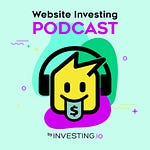

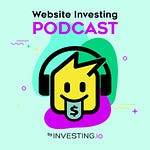
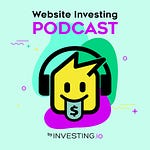
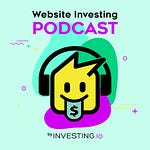
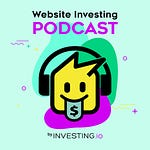

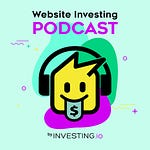
E6 Part 1: Matt Diggity on Levelling Up